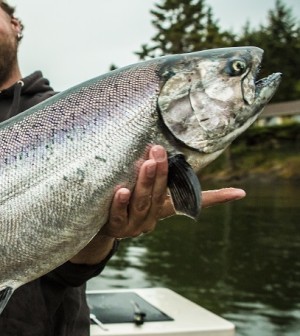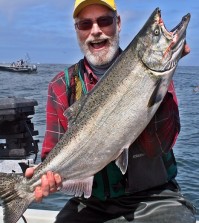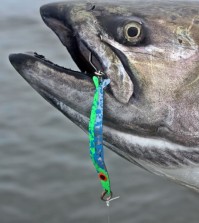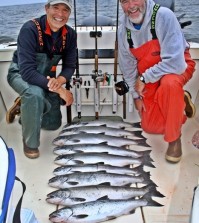Trolling Tension

Each week one of the Salmon University experts answers reader questions in our “Ask a Pro” feature. This week’s questions are answered by Tom Nelson. Submit your own question here.
Q: Thank you for your efforts on the website. I find the information so useful that I go out of my way to do business with the folks who sponsor your site. Now to my question: I often fish with either cut plug herring or whole herring in a Pro Troll rotobait holder with an e-chip. I either mooch, drift mooch, or troll behind a dodger or flasher. Normally I use Gamakatsu Octopus hooks. Do you have any comments about using the octopus circle hooks with these methods? Thanks – Bob.
A: If you are mooching or drift mooching the Octopus circle hooks are great hooks to use. Be aware that you must let the salmon take the bait and swim away with it before setting the hook. Actually, the salmon will almost set the hook for you. The nice thing about this is that the salmon is almost always hooked in the lip so it makes it easy to release the shaker with almost no harm. Once a fish is hooked on a circle hook, you almost never lose him. As for trolling with circle hooks, the J hook is more effective than the circle hook by far.
Q: When you are trolling for coho (and chinook I suppose) how tight do you set your release clips? My dad and I disagree on the issue. I put my line as far back in the clip as possible (more tension) while my dad puts his line somewhere in the middle (much less tension). I think that the higher tension helps set the hooks in the fish while it struggles for those few extra seconds trying to break free from the downrigger. The only drawback for me is that I have trouble popping my line off the clip when I want to check my line. My dad doesn’t have that problem. Instead, my dad’s line occasionally breaks free for no reason. I don’t have that problem. I have noticed that he loses a few more fish than I do but I don’t know if that has to do with the downrigger release tension. So my question is, is the added tension I’m creating by putting my line further back in the clip have any advantages or am I creating more hassle? Is there a right answer or is it personal preference? Thanks in advance – Greg
A: Setting the tension on your release clips is largely a matter of preference. I try to set mine so that a four pound salmon will break it loose. I often will adjust my tension tighter during a days fishing if kelp or weed in the water begins to build up on my line. The important thing to remember is when a salmon strikes, don’t set the hook as the tension on your release clip has already set the hook. I have seen a lot of salmon that are lightly hooked lost, as the angler tries to set the hook again.
Q: On Friday we caught 2 nice Halibut, but Saturday didn’t even get a bite. We are going out again next weekend, but this time I want to blue up and harden the herring. I have the bluing liquid, but can’t remember the recipe. I think it is just salt. Do you know the amount of salt and for how long? Do you think this is needed for Halibut? My son from Portland and my husband are going fishing with us and either of them has ever caught a Halibut before. – Claudia
A: I am going to refer you to a couple of articles on the Salmon University website. The first article is a step-by-step Herring Brining article by Tom Pollack that will walk you through the brining process. The second is an article written by Terry Rudnick “Bait/Lure Combos for Halibut”. Terry is the co-author of the award-winning book How to Catch Trophy Halibut.
image courtesy Kris Krüg (CC BY-NC-ND 2.0)










